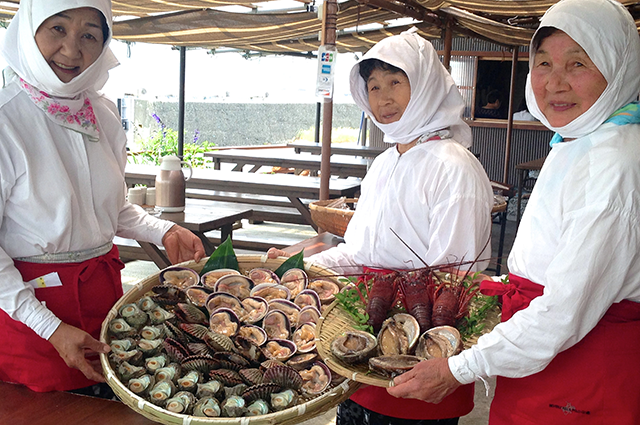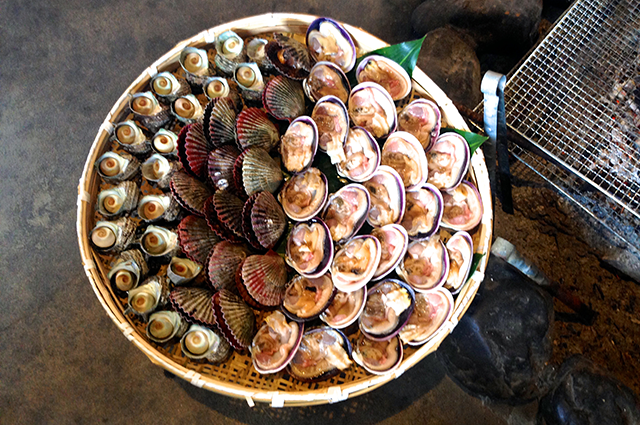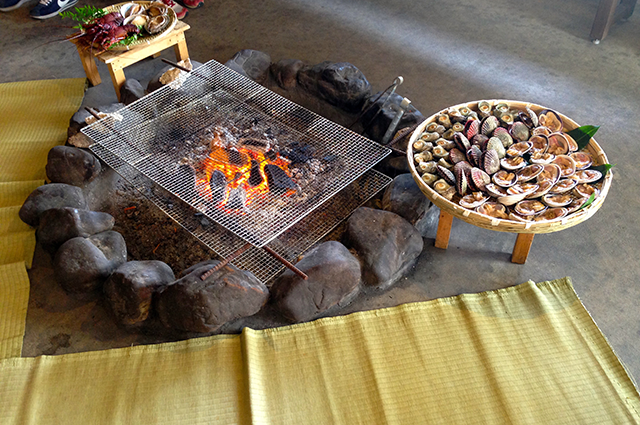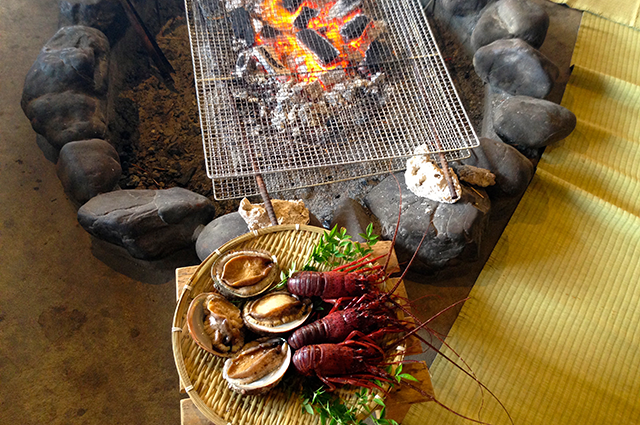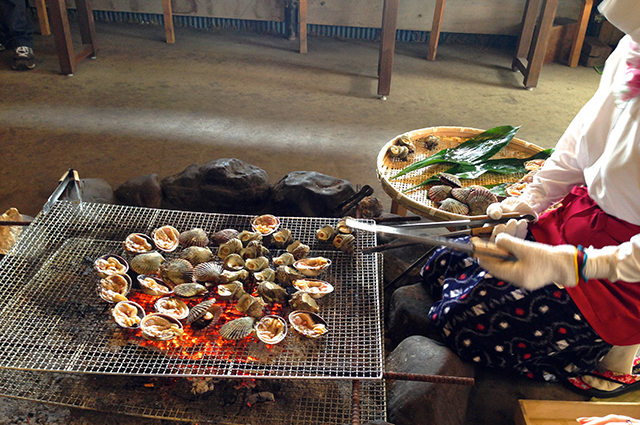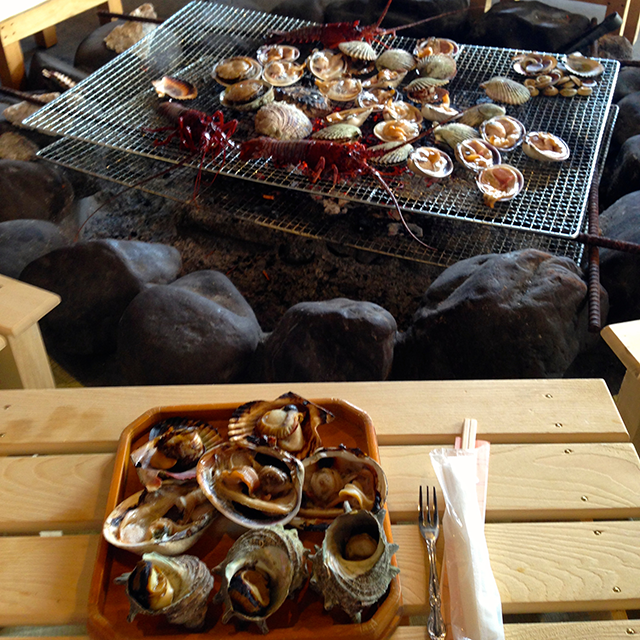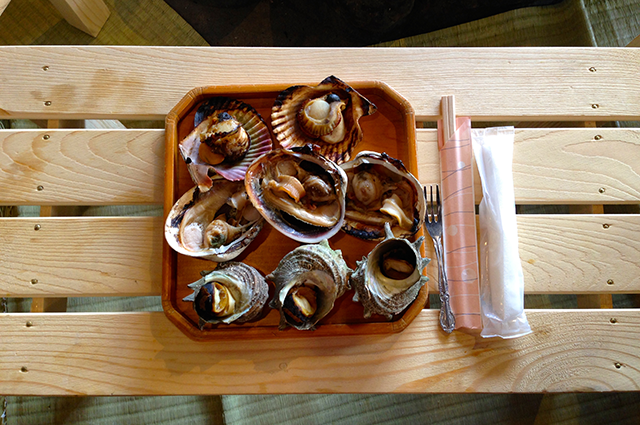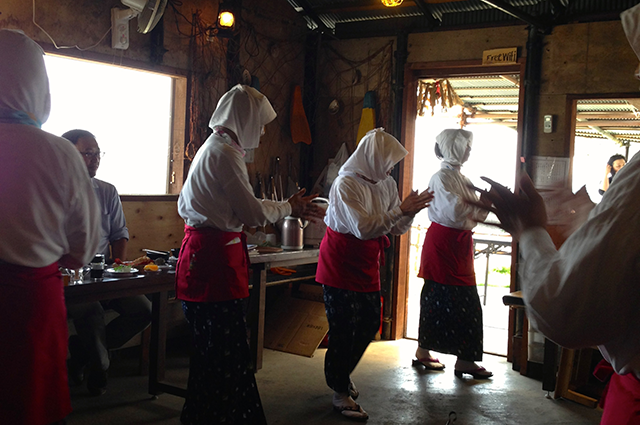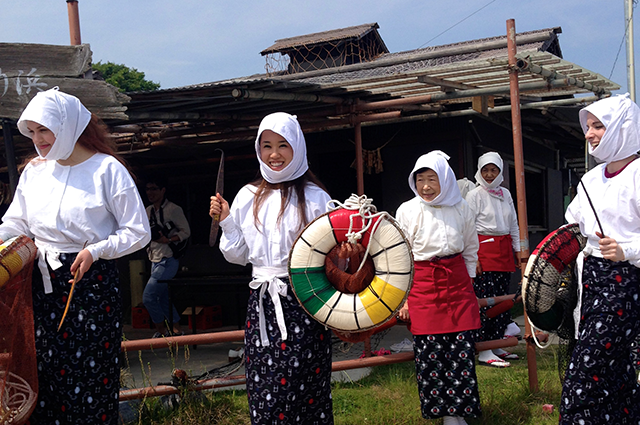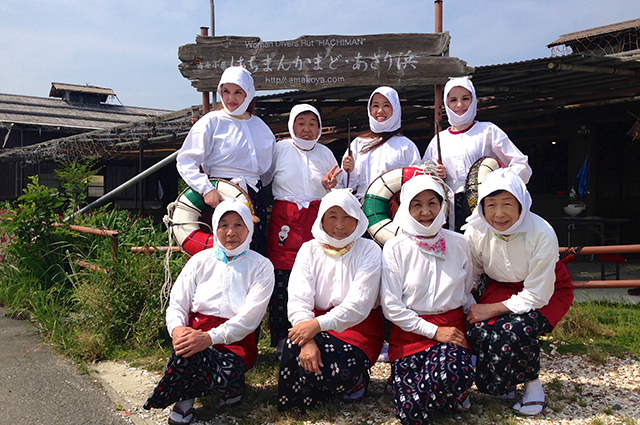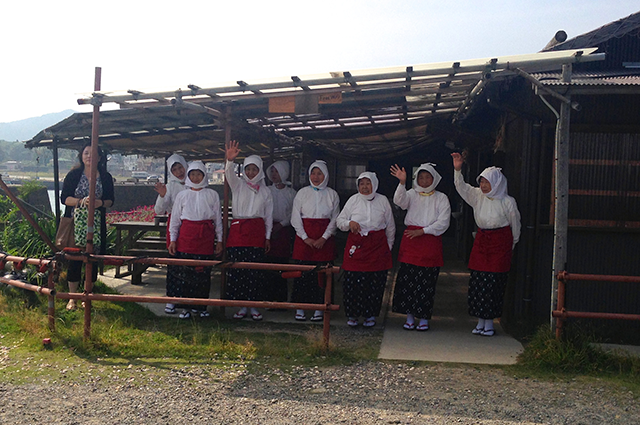“It’s been nearly 70 years,” ama diver Reiko Nomura says, “I’ve been diving since I was 13 years old, and I am 82 years old now.”
By Sami Kawahara
Through an interpreter and tour guide provided by the city of Toba, we were given the rare opportunity to communicate with the ladies of ama in a traditional ama hut, or amagoya. With fewer than 2,000 ama divers left in the world, continuing a tradition that dates back 2,000 years, it’s an experience that we’d highly recommend to any local in Japan or tourist visiting.
As we pulled up to the amagoya, ama-sans greeted us fully prepared with two platters of seafood and a fire blazing, ready to start cooking the freshly caught abalone, lobster, and oysters. As we sat around the fire observing ama-san carefully placing each shellfish on the grill, we communicated as if we spoke each other’s native language. But through our interpreter, we learned about Reiko’s past as a diver and about the rich history of this community of women.
Reiko-san tells us that women used to become divers at an early age to earn some money for their weddings. Ama diving was one of the first real, paid jobs for women as only women could free-dive at that time. Nowadays, ama have the option to wear wetsuits, but before wetsuits were available, ama dived in white loincloths. With men typically having 1/3 the body fat of women, women could withstand the cold temperatures better than the men.
As we enjoyed the fresh seafood and conversation, the ama-sans broke out into a perfectly synchronized, traditional odori dance. And after the dance, it was time to try on some traditional ama fashion for ourselves. Wrapped, tied, and bundled by three different ama-san at the same time, we felt like royalty getting ready for a high-fashion event. The ama made sure everything was secure and tight as we imagined ourselves stepping back in time, equipped with the various tools of the ama diving trade.
As the ama-san age, the chance to hear their stories will slowly wane. After all, Keiko-san did say the youngest ama in her community was 40 years old.
So, if you have the time or chance to travel four hours south from Tokyo, we’d certainly put this towards the top of the list of places to go in Japan.
Click the slideshow below for the experience in photos:
For more information on how to set up your own amagoya lunch, check out their website.

